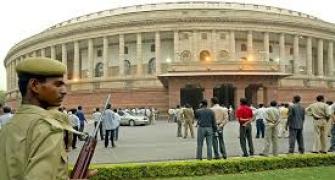In contrast, pvt sector had Rs 4.6 lakh-cr cash in FY14.
 The government’s attempt to spearhead the investment cycle by prodding central public sector undertakings sitting on cash to scale up capital expenditure may have a subdued impact because of a decline in their profits in the past three years.
The government’s attempt to spearhead the investment cycle by prodding central public sector undertakings sitting on cash to scale up capital expenditure may have a subdued impact because of a decline in their profits in the past three years.
At the end of March 2014, 54 major listed central government enterprises were sitting on cash and equivalents worth Rs 2 lakh crore (Rs 2 trillion), unchanged from a year ago.
The amount is around a fifth of the cumulative investment in fixed assets by these companies.
The bulk of this cash lies in bank deposits that earn little as interest. These companies can expand their capacity by around a fifth if they use all their cash.
In the past five years, the combined capital expenditure by these companies grew at a compound annual rate of 13.7 per cent. In 2013-14, the companies together commissioned projects worth Rs 1.15 lakh crore (Rs 1.15 trillion) and another Rs 51,000 crore (Rs 510 billion) worth of projects were being implemented.
A cash-backed investment push will provide a one-time bump in the PSU capex cycle and cushion the scaling down by private companies, many of which face balance-sheet issues.
“An investment push by PSUs will surely help the investment cycle, given their size and position in the industrial value chain.
"A capex blitz by companies like Coal India, NMDC, ONGC, Indian Oil, NTPC and Power Grid would trigger matching investment downstream by private firms, lifting India’s investment cycle,” said G Chokkalingam, founder and chief executive of Equinomics Research & Advisory.
Analysts, however, said it was doubtful the PSU managements would commit their entire cash reserves to capex, given the demand slowdown, fall in commodity prices and a resulting squeeze on their profits.
“There has been a deterioration in the PSUs’ financial ratios in the past four years and a forced spending binge may put quite a few of them in trouble,” said a senior analyst at a brokerage firm who did not wish to be named.
Companies’ ability to scale up capex has been falling because of dropping profits and rising indebtedness.
The PSUs’ cash reserves have remained stagnant in the past five years and have dipped in the past two.
Companies have had to borrow to fund ongoing capex due to slower top-line growth, a decline in profits and their compulsion to maintain dividend payouts.
In the past five years, their net profit grew at a compound annual rate of 10.9 per cent, slower than capex (13.7 per cent) and dividend (18.2 per cent).
Analysts expect a further squeeze on PSU earnings because most of them are commodity producers or operate in highly cyclical sectors.
These include Oil and Natural Gas Corporation, GAIL, Indian Oil, Steel Authority of India, NMDC, Coal India, NTPC, Power Grid Corporation, Bharat Heavy Electricals Ltd (BHEL) and National Aluminium Company.
In 2008-09, PSUs distributed 33.1 per cent of their net profit as dividend; this ratio jumped to 45.5 per cent in 2013-14.
In all, PSUs distributed a little over Rs 47,000 crore (Rs 470 billion) as dividend in the last financial year, nearly 40 per cent of all dividend payouts by all listed non-banking and non-finance companies in India.
This resulted in a relative decline in the PSUs’ retained earnings, forcing them to borrow more to meet the shortfall in internal accruals.
In the past five years, their gross borrowing grew at a compound annual rate of 22.3 per cent, nearly tripling from 2008-09, while net debt (net of cash and equivalents) has compounded annually at 41.9 per cent, growing nearly six times.
The PSUs’ net debt-to-equity ratio shot up to 0.7 at the end of 2013-14 from 0.2 at the end of 2008-09.
The other issue is that the bulk of the PSU cash pile is accounted for by a handful of companies, with Coal India itself sitting on a little over a fourth of it.
The top four PSUs together had nearly 60 per cent of all the cash reserves in our sample.
Analysts also said it was misleading to say that PSUs were sitting on idle money when the private sector was accumulating cash even faster.
In the past five years, the private sector’s cash and equivalents grew at a compound annual rate of 20 per cent, accounting for 70 per cent of India Inc’s cash pile at the end of 2013-14 compared with 52 per cent in 2007-08.
Not surprisingly, experts are asking for a strategy to induce the entire corporate sector to reduce its cash hoard, either through higher capex or by putting more cash in the hands of shareholders through bigger dividend payouts.
Representative image. Photograph: Reuters








